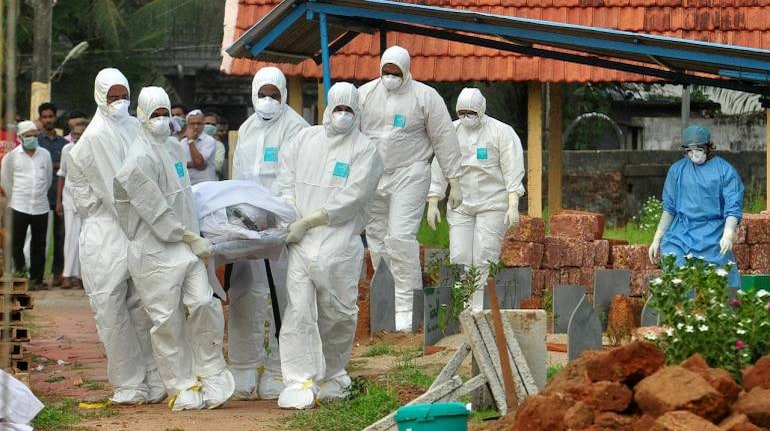



After a 12-year-old boy in Kozhikode died of Nipah on September 5, the local authorities have geared up to check any further spread of the deadly virus in the district and surrounding areas. Pune National Institute of Virology confirmed the presence of Nipah virus.
Kerala Health Minister Veena George said that two more people have been identified with symptoms of Nipah virus infection.
Read | Nipah virus: Centre rushes team to Kerala after 12-year-old boy dies
The two are among the 20 high-risk contacts of the deceased child, she said, adding that all the high-risk contacts will be shifted to the Kozhikode Medical College by evening, while other contacts of the child have been asked to remain in isolation.
The pay ward at the Medical College Hospital has been completely converted into a dedicated Nipah ward, she said.
The minister also asked the neighbouring Kannur and Malappuram districts to remain cautious.
Here's an explainer on the deadly Nipah virus:
What is Nipah virus?
The World Health Organization (WHO) had defined Nipah virus (NiV) as a zoonotic virus that is transmitted to people from animals and can also be transmitted through contaminated food or directly from person to person.
In infected people, Nipah virus causes a range of illnesses from asymptomatic (subclinical) infection to acute respiratory illness and fatal encephalitis.
The virus can also cause severe disease in animals such as pigs.
How does Nipah virus spread?
According to US CDC, Nipah virus (NiV) can spread to people from:
> Direct contact with infected animals, such as bats or pigs, or their body fluids (such as blood, urine, or saliva)
> Consuming food products that have been contaminated by body fluids of infected animals (such as palm sap or fruit contaminated by an infected bat)
> Close contact with a person infected with NiV or their body fluids (including nasal or respiratory droplets, urine, or blood)
Symptoms of Nipah virus infection
Human infections range from asymptomatic infection to acute respiratory infection, seizures, and fatal encephalitis.
As per the WHO, infected people initially develop symptoms that include fever, headaches, myalgia, vomiting, and sore throat.
This can be followed by dizziness, drowsiness, altered consciousness, and neurological signs that indicate acute encephalitis.
Some even experience atypical pneumonia and severe respiratory problems, including acute respiratory distress. Encephalitis and seizures occur in severe cases, progressing to coma within 24 to 48 hours.
The case fatality rate of Nipah virus infection is estimated at 40–75 percent but can vary by outbreak depending on surveillance and clinical management in affected areas.
Treatment for Nipah virus
There are currently no drugs or vaccines that specifically target Nipah virus infection.
WHO has, however, identified Nipah as a priority disease for the WHO Research and Development Blueprint.
Culling of infected animals – with close supervision of burial or incineration of carcasses – may be necessary to reduce the risk of transmission to people.
Restricting or banning the movement of animals from infected farms to other areas can reduce the spread of the disease.
Discover the latest Business News, Sensex, and Nifty updates. Obtain Personal Finance insights, tax queries, and expert opinions on Moneycontrol or download the Moneycontrol App to stay updated!
Find the best of Al News in one place, specially curated for you every weekend.
Stay on top of the latest tech trends and biggest startup news.